Tips on How to Write a Japanese Curriculum Vitae

Just as how you’d hunt for jobs in your home country, you need to submit a curriculum vitae (CV) when looking for a job in Japan. This is known as rirekisho (履歴書), which translates as “resume.” As you may know, there is a clear difference between CVs and resumes, where the former tends to be longer and more comprehensive than the latter. As such, we’ll be referring to the document as “rirekisho” in this article.
Table of contents
Tips on How to Write a Japanese Curriculum Vitae

A rirekisho might be different from the kind of CV or resume you’re used to in your home country. The fact that they have uniform templates is one stark difference! You can easily purchase a blank form from the nearest convenience store, or even download them online and then digitally fill them out for ease. Interestingly though, Japanese companies prefer handwritten rirekisho as they display diligence. Here’s a sample template of a downloadable rirekisho:
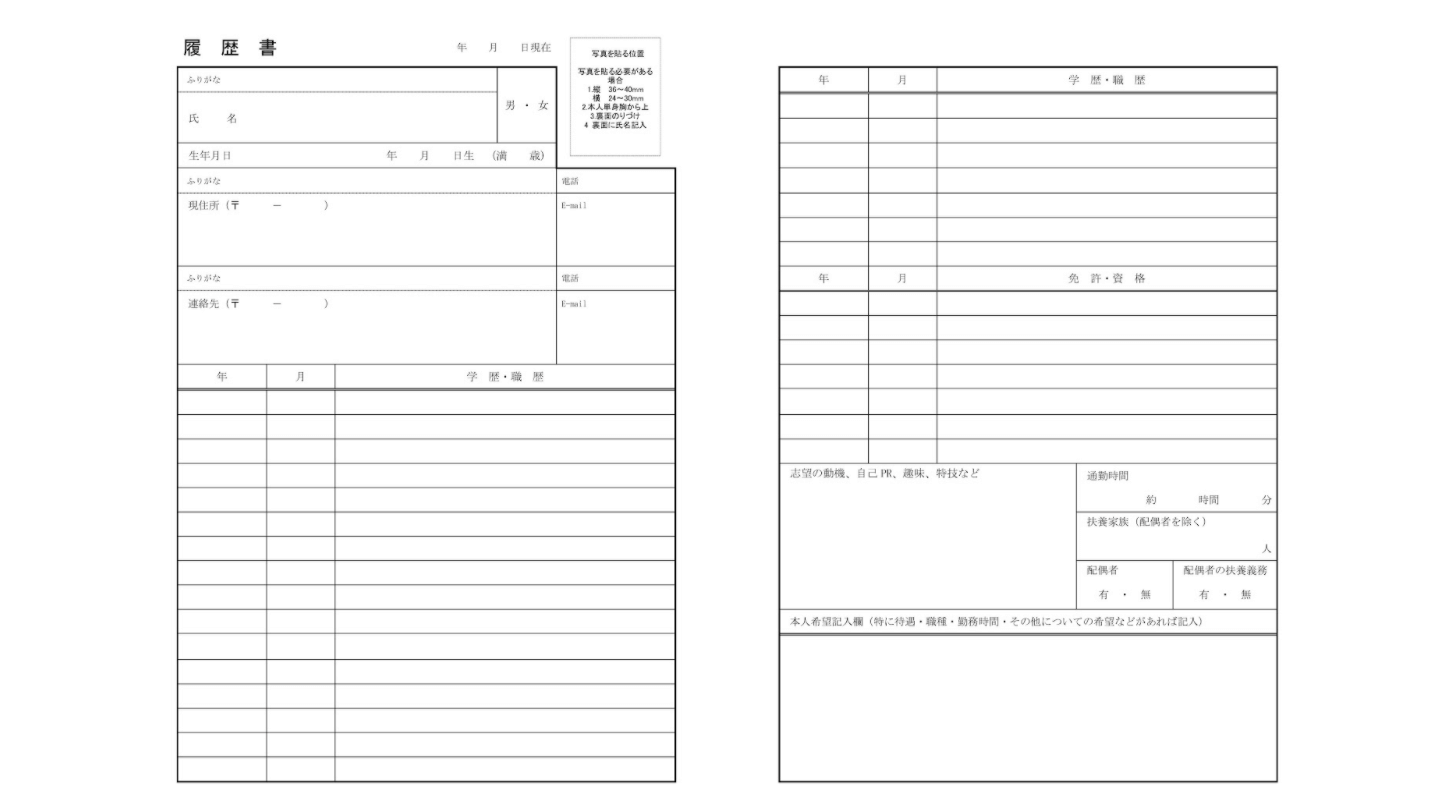
In this article, we’ll get into other differences that Western resumes and Japanese rirekisho have. Basically, rirekisho can be much more uniform and strict than Western types. This can understandably intimidate any first time job seekers, especially since they’re in a foreign language!
Rirekisho usually start out with 2 pages. You may need to add extra documents if companies require supplementary forms. We’ve sectioned off the basic template into 3 parts with some tips on making the best rirekisho. Unload all your uneasiness with these differences, get your black pen ready, and follow our simple guide to land a job with your Japanese CV:
Section 1: Personal Data

The 1st section is very straightforward. This contains the date of your application, name, photo, address, and other essential contact information.
The application date should match the actual day you fill out your rirekisho. Also note that some rirekisho templates use the traditional Japanese calendar system, which coordinates with an emperor’s reign. Although there are others that leave out era names and allow Gregorian calendar years, most companies may still prefer and follow the traditional system. Using the Japanese years would also display your willingness to adapt to their system!
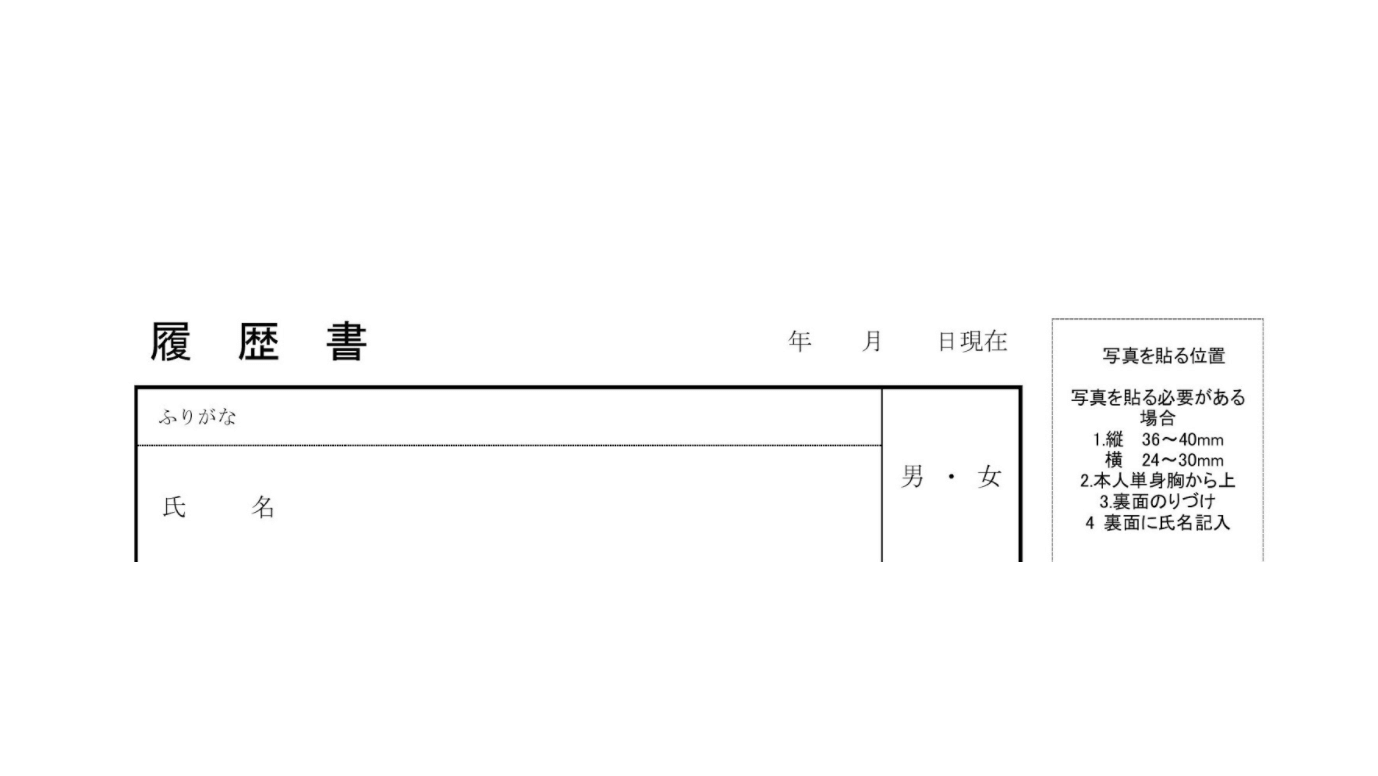
The name box should contain your full name and stamp. Make every stroke count when you write your name! Legible handwriting is always a plus, especially if your name is in kanji. Be sure to write the hiragana equivalent in the ふりがな space provided above your name. If you have a Western name, simply print it as you normally would and then write its katakana equivalent above. You may leave the space for your personal name stamp blank unless you have one.
Of course, you will need to provide a photo. There are lots of photo booths in business districts if you want to save time from visiting a professional studio. These photo booths are extremely convenient because they have printing options appropriate for rirekisho photos. All you have to do is look your best presentable self and then pick your favorite snapshot! It automatically creates a 36-40mm x 24-30mm photograph for you to attach in your form.
You must glue your photo on the space provided. Be sure to write your name behind the photo just in case. If you purchased your rirekisho from a store, they usually come with a strip of double-sided tape for your convenience! Also, you have to resemble your picture when you go in for an interview, so be sure to wear the same business outfit you wore in your photo.
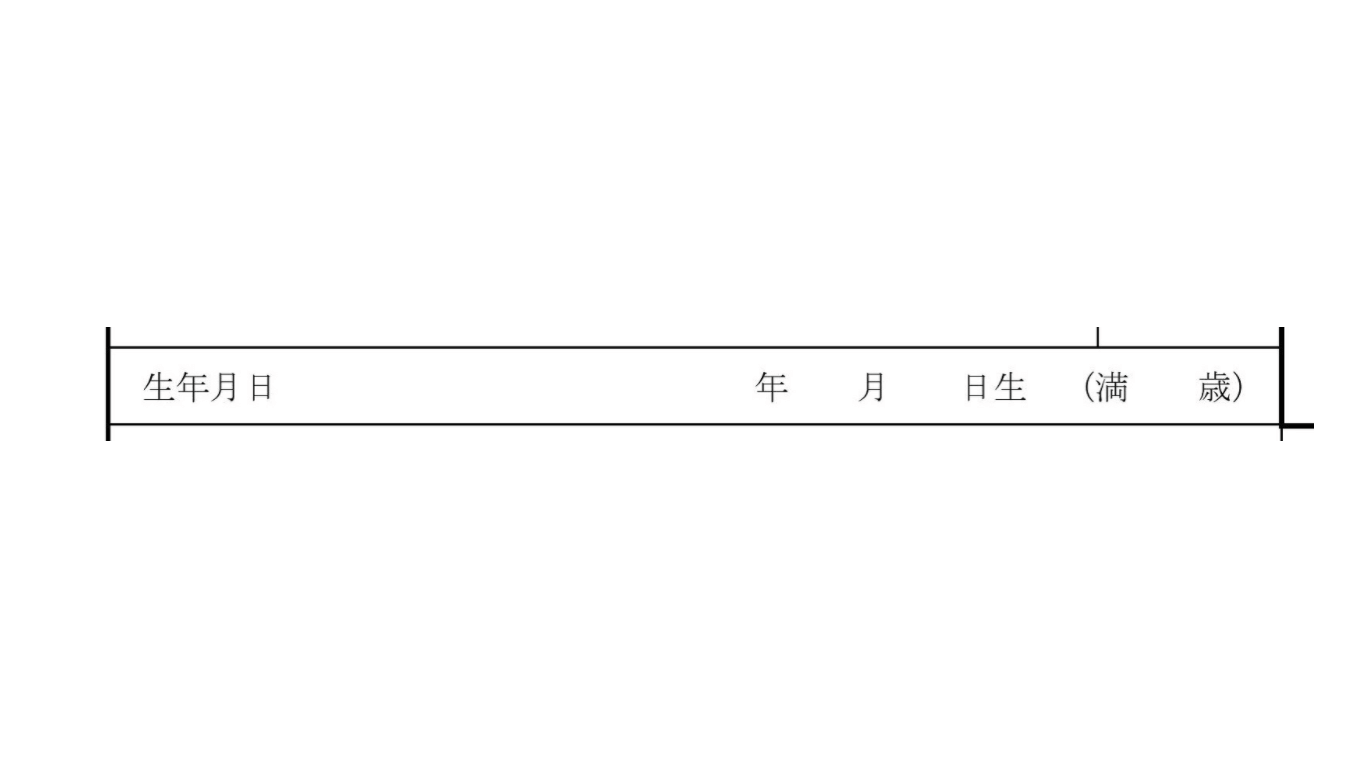
The next area contains your birth date, age, and legal gender. The date of your birth also follows the Japanese calendar system. If you were born between the years 1926-1988, that means you were born during the Showa (昭和) period. Meanwhile, the Heisei (平成) period begins in 1989.
To the right of your birth date, write your current age between the (満 歳) characters. Next, encircle the symbol that matches your legal gender, where 女 represents female, while 男 represents male. Let’s say you were born on January 30, 1995. You would write your birth date on your rirekisho as 平成7年1月30日生, since 1995 is the 7th year of the Heisei era. If you circle女, this would indicate that the applicant is a 25-year old woman.
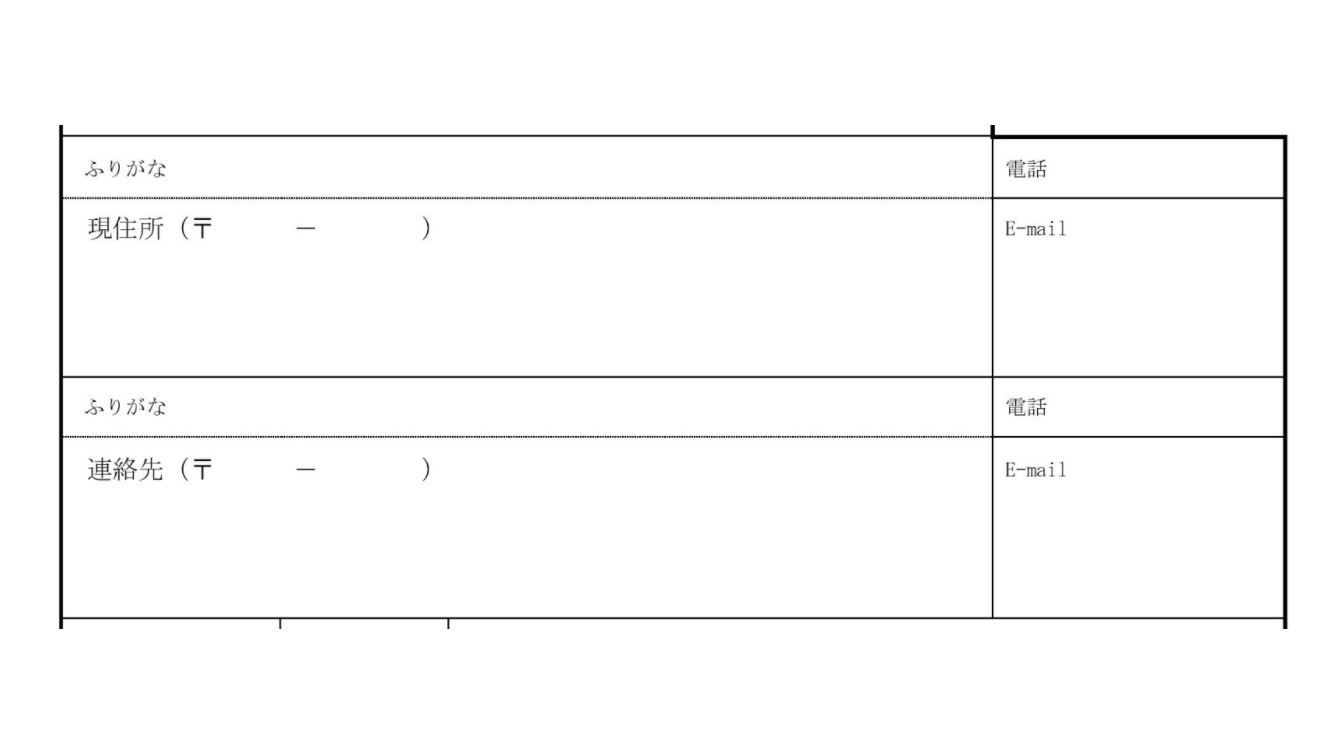
Finally, you need to write your contact information. This includes your current address and phone numbers. In the space for a mailing address, you’ll notice a “〒” symbol, after which you should write the postal code for your Japanese address. Japanese addresses follow this order: Prefecture, Ward, Town, Chome (丁目), Ban (番), and Go (号). You then have to print the hiragana or katakana equivalent in the ふりがな space provided above.
If you live overseas, simply indicate your mailing address as you normally would, and then in katakana form above. As for your phone numbers, be sure to include a “+” and your country code before your digits.
Usually, there are 2 spaces for addresses and contact information in a rirekisho. The 2nd space is reserved for emergency contact. If you live overseas and have a contact in Japan, you should print their contact details in this space. You may leave it blank if you don’t, or you could write “同上” to indicate that the address and numbers are the same as above.
Section 2: Educational and Occupational History

This next section is dedicated to the schools you’ve attended and jobs you’ve worked so far. You must list your educational and occupational history in chronological order, unlike Western CVs where you usually print your latest university or office before everything else. Treat this section with utmost accuracy and care since Japanese companies place extreme value on education during the hiring process!
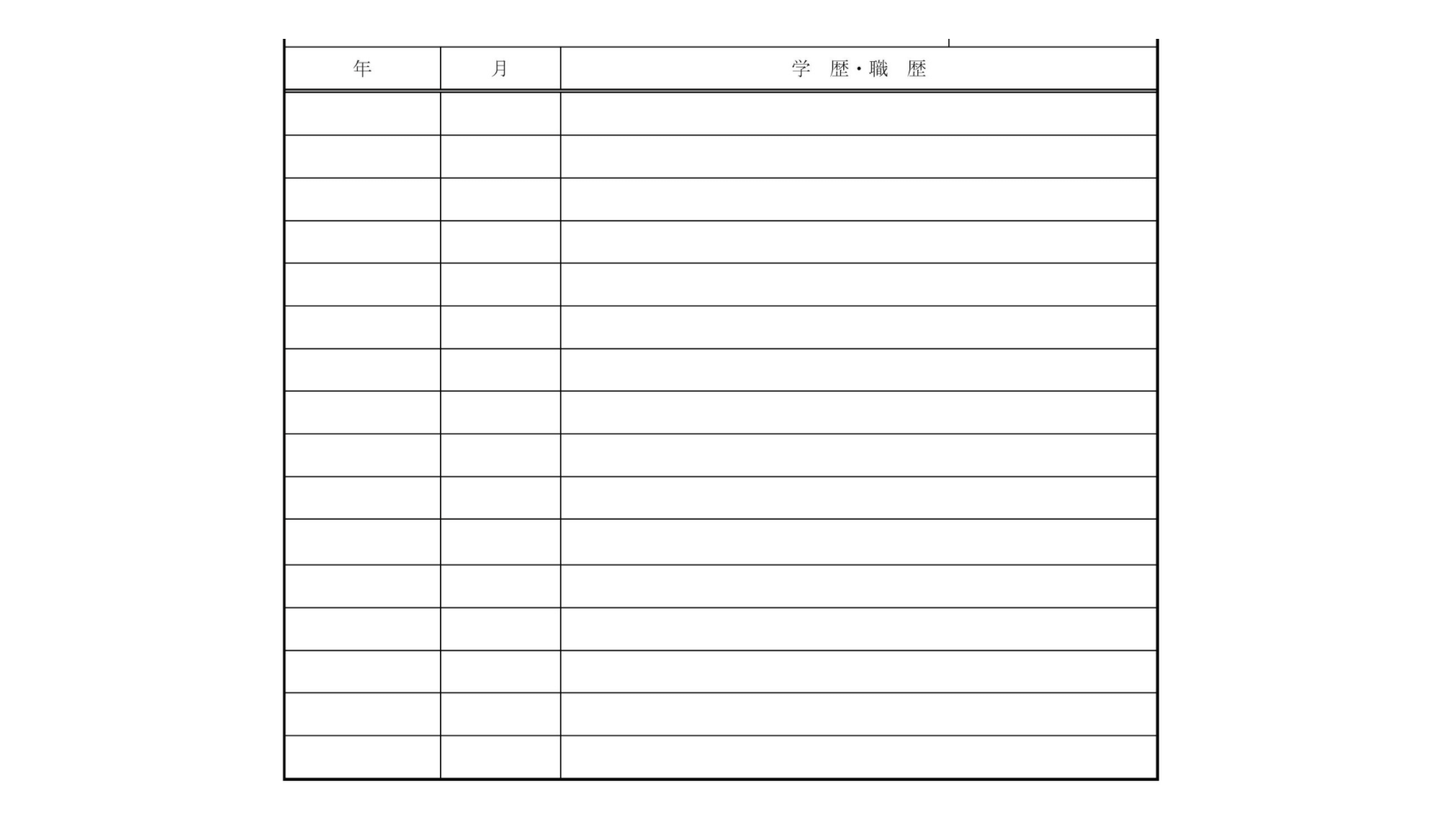
Be sure to print the names of your schools and universities legibly! Indicate the entry and graduation dates to the left of your entries. You may use Western years when indicating entry or graduation dates. But since you used the Japanese calendar system in previous sections, might as well keep it uniform. To the right of your high school entries, write the symbol for the date of admission or nyugaku (入学). For elementary and middle schools, indicate the graduation date or sotsugyo (卒業).
If you studied outside of Japan, be sure to include the country (国), university (大学), department (学部), and indicate that you studied abroad (留学). You may also include a space in-between your entry and graduation to list majors or achievements. Likewise, you can insert a line after graduation for your graduate thesis.
You should also mention the reasons if you’re a university undergraduate. You can indicate personal reasons (自己都合) or say that you changed career paths (キャリアの変更). Once again, Japanese countries highly value academic entries, so be very precise with yours! You want to present only the most accurate information to avoid any legal mishaps.
Leave 2 spaces before you begin chronicling your work history. You can simply write the name of the company without going into too much detail about your tasks. You might do this in Western CVs to thoroughly discuss how your past experience will benefit your new company. In your rirekisho, trust that recruiters already have a pretty good idea of your duties in certain companies. And if you must, you can elaborate further when you get called in for an interview. Let your personality shine through!
Like your school history, write the companies you’ve worked for in sequential order. After a company name, write nyusha (入社) to indicate the date you started working for them. Conversely, you should indicate the reasons for leaving the company beside the appropriate entry. Popular reasons include retirement (退職), company restructuring (リストラ), or getting laid off (解雇). Of course, you can write the phrase for leaving due to personal reasons, “一身上の都合により退社.”
If you’re currently employed at your latest job during application, indicate as such with, “現在に至る.” Finally, write “以上” when you’re done listing all your schools and workplaces down.
Section 3: Special Achievements

This final section contains all extra personal information. This includes achievements outside of school and work.
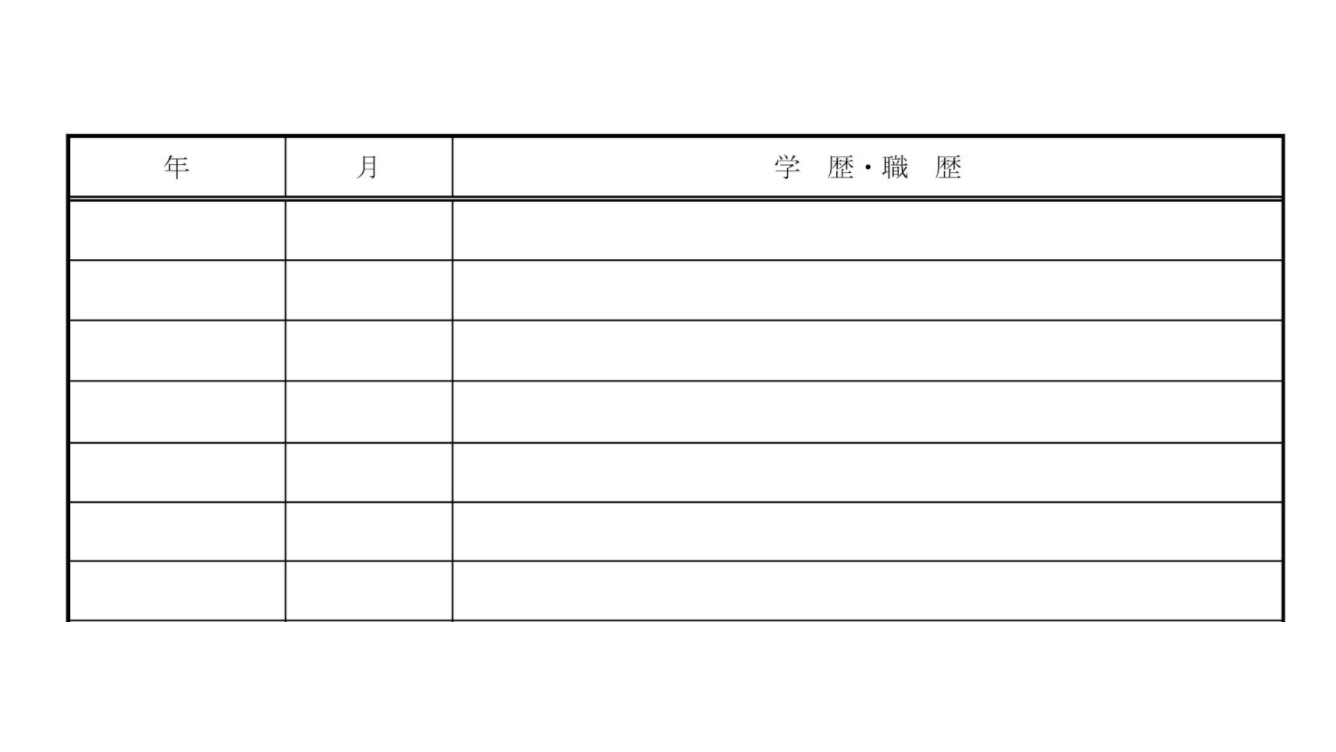
Here, you can specify what kind of driver’s license you may possess. Some companies may regard license holders highly over other applicants. You should also list certificates like the Japanese Language Proficiency Test (JLPT) Certificate, Teaching English as a Foreign Language (TEFL) Certificate, and similar accomplishments.
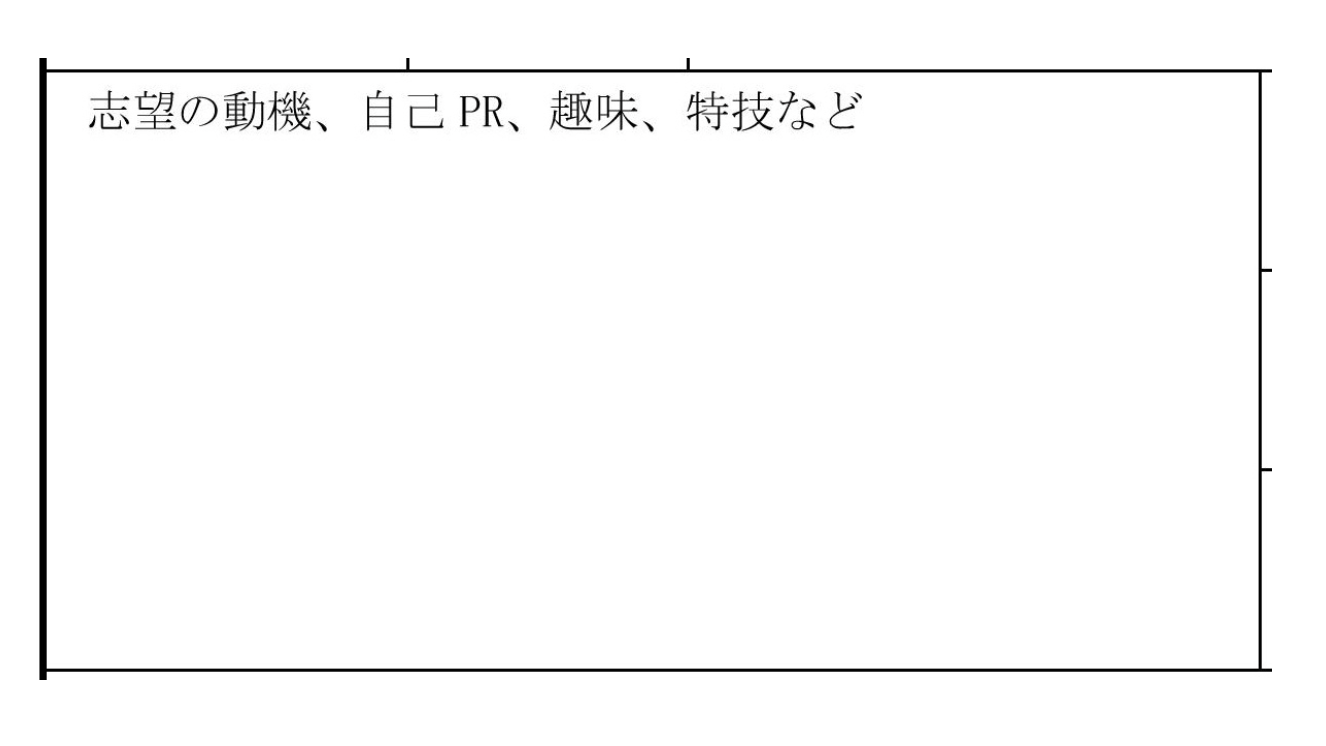
You also get to highlight your individuality in this section! There is a designated space for your motivations for applying for a certain position. You can use common phrases like, “営業経験を活かして、 [career] の仕事にて活躍したい” to say that you wish to apply your previous experience in a certain field of work. In the same space, you can be as creative as you want when you mention special skills you might have, interests or hobbies, and other standard introductions and conversation starters.
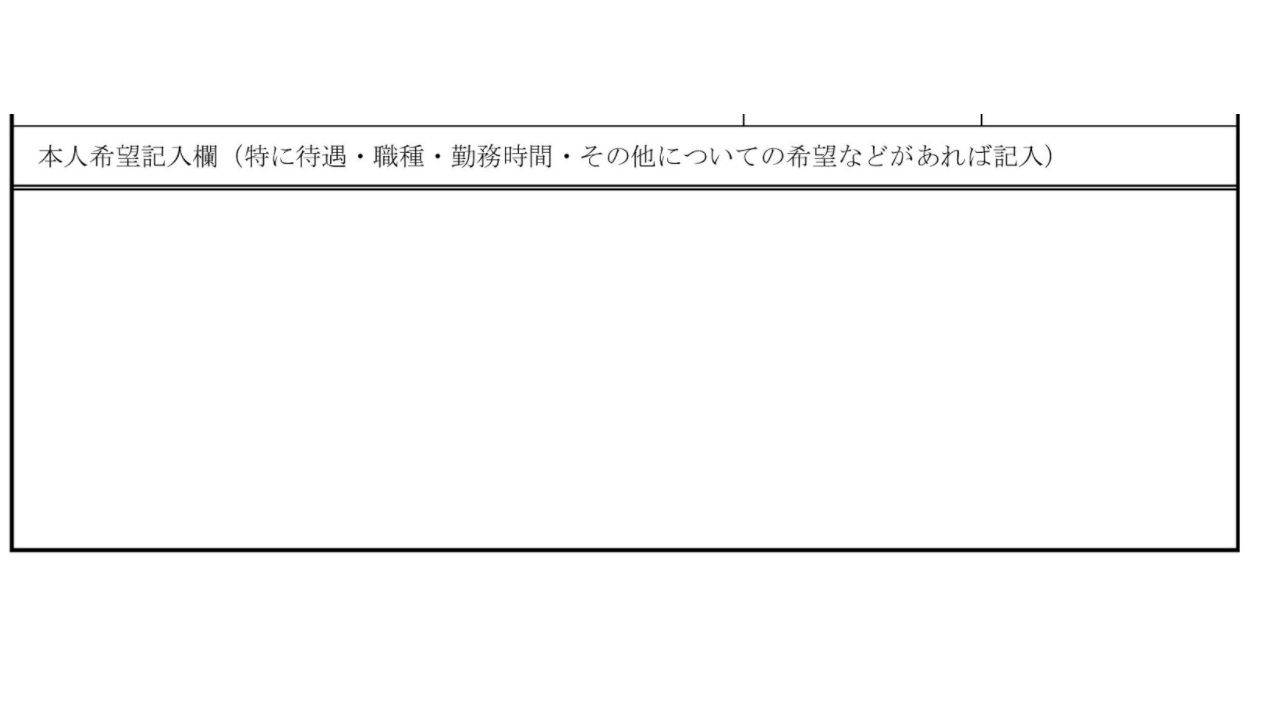
If you live in Japan, there’s a space in your rirekisho where you should specify how long it would take you to get to their office. You can use transit apps to calculate your commute time. If you’re applying from overseas, you may leave this blank. In the same area, you should also mention the number of dependents you may have next to 人. Write “0” if you’re supporting yourself. There are also options for your civil status. If you’re married, encircle 有, and choose 無 if not.
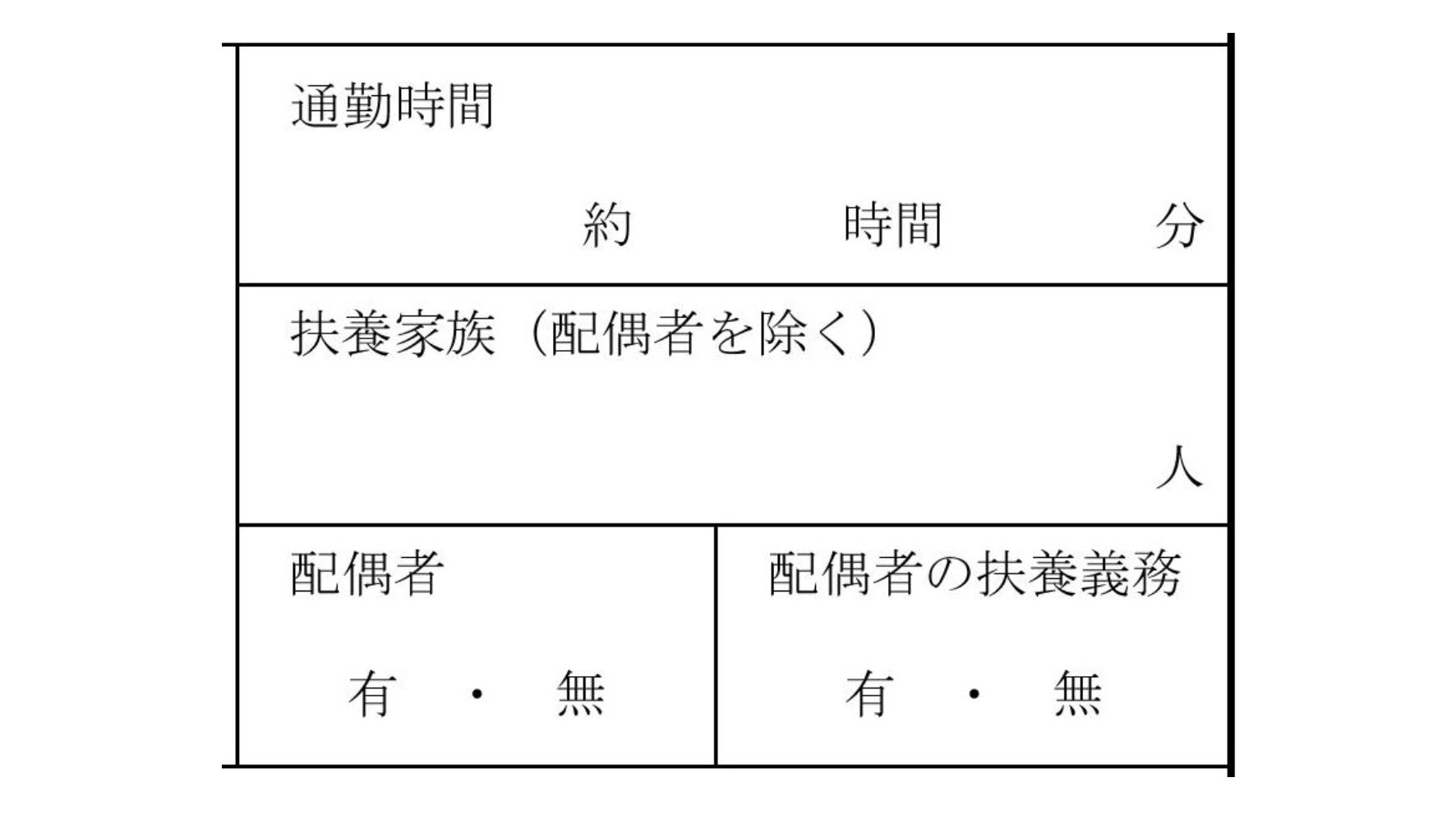
Finally, you get to list down any special requests you may have from the company you’re applying for! List down salary demands, the type of work you’re aiming for, desired number of work hours, or even your preferred work location. Of course, if you feel more comfortable talking about such things in person, you may say so in the space provided. If you’re applying to multiple jobs, be sure to adjust your application appropriately. This would also mean that you need to fill out a separate rirekisho, since photocopying might leave an impression of laziness.
Some rirekisho might have a space under the special requests area that’s dedicated for the contact information of your legal guardian. Only fill this out if you’re applying as a minor. Besides this, you’re pretty much done with your rirekisho!
Conclusion
There you have it! You’re ready to send your rirekisho to your future employer. If you’re delivering it by mail, be sure to use a large envelope to avoid creasing any documents. If you’re bringing it with you during an interview, remember to keep any supporting documents you have in a separate folder.
The format of the local CVs you’re used to might not entirely apply to the Japanese type, but you’ll be fine. If anything, a rirekisho should be more convenient! After all, everything is standardized. It’s all a matter of adapting to this new standard and working your way around the template to make yourself appear attractive to prospective companies. You got this!
Motto Japan, the community platform to support foreigners with the foundation for life in Japan, including Japanese study, job opportunities, and housing service. Motto Japan Media will provide a wide variety of information for Japanese fans all over the world, to create a cross-cultural environment and enrich the life of foreign residents in Japan!



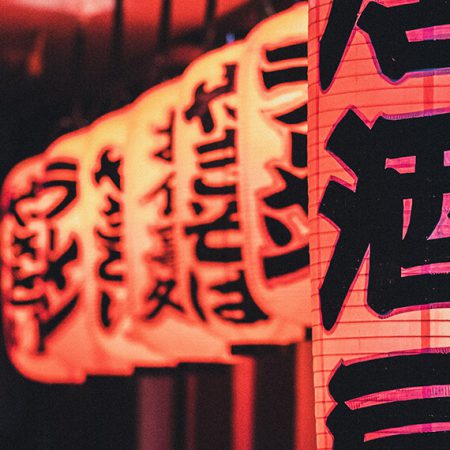
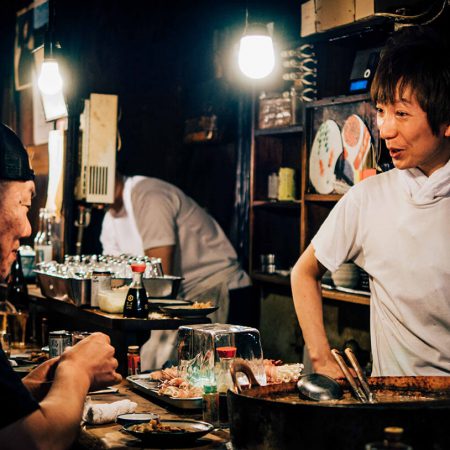

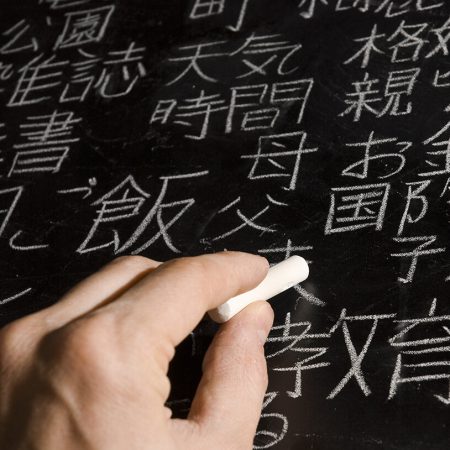






Leave a Reply